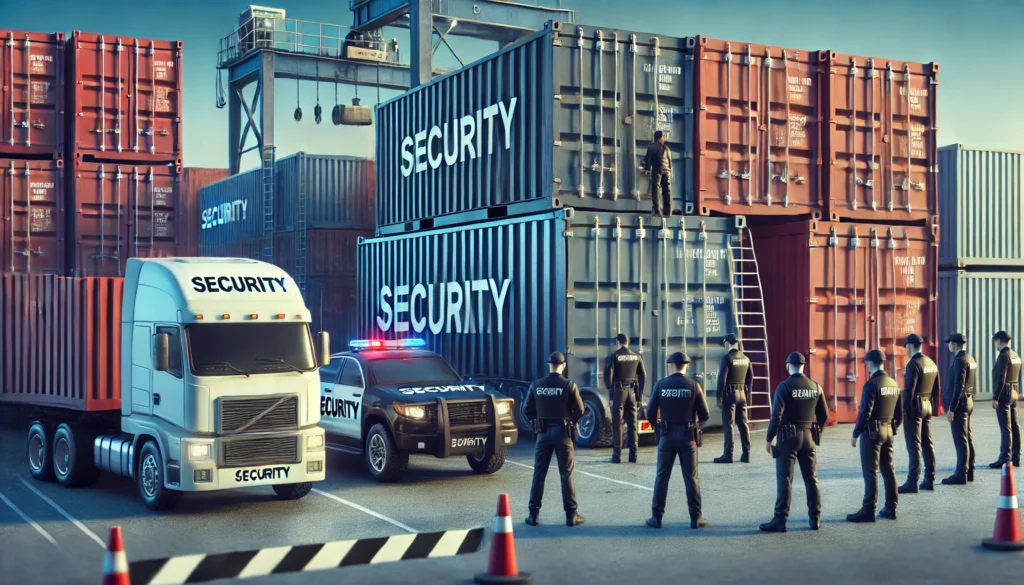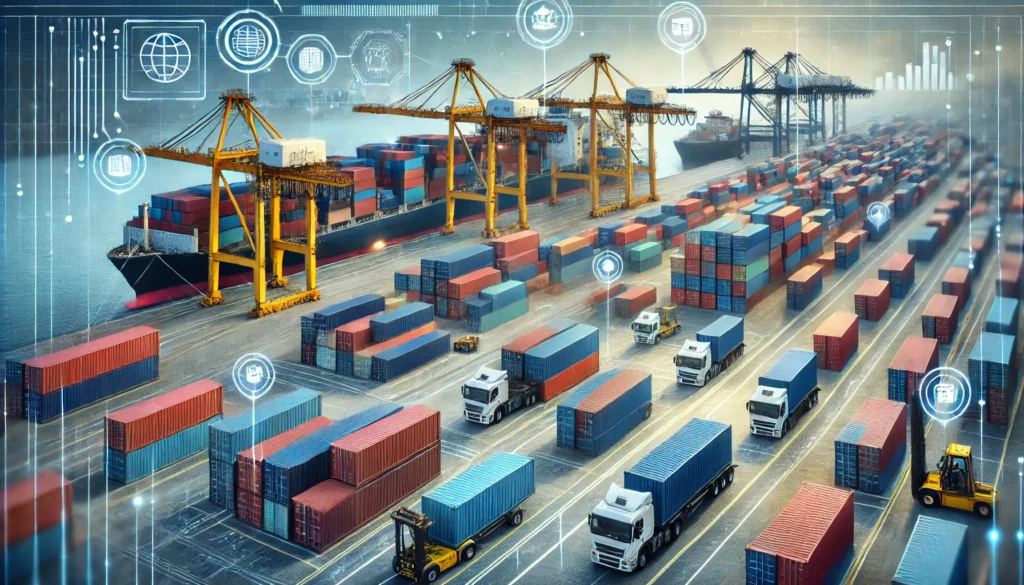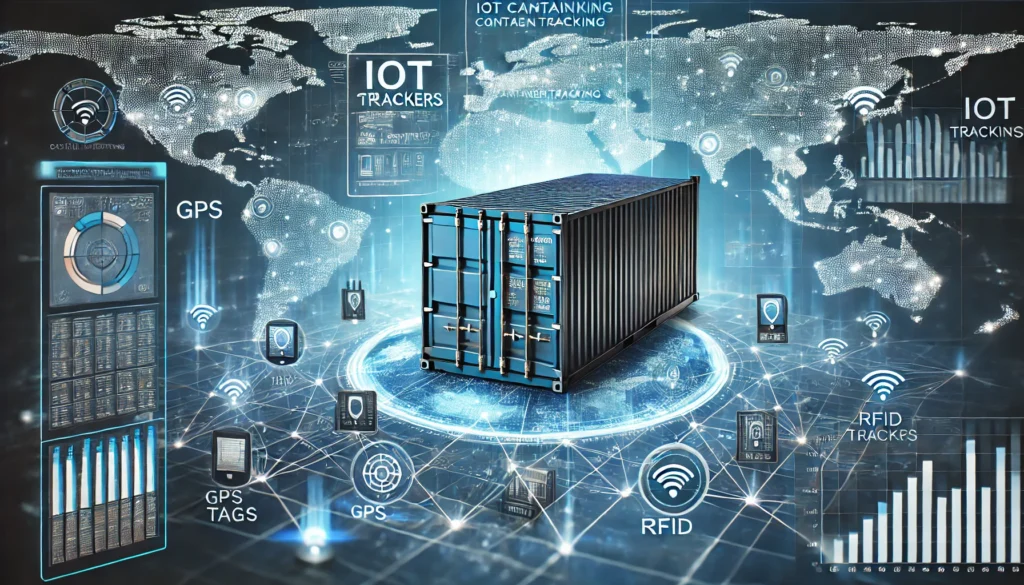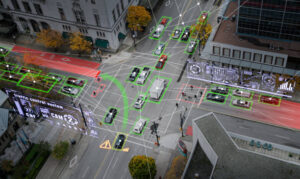In the fast-paced world of logistics, ensuring the security of containers is paramount. With increasing incidents of theft and loss, companies are turning to advanced technologies to safeguard their assets. IoT container tracking for security has emerged as a powerful solution to address these challenges.
IoT solutions for container tracking provide real-time monitoring and data collection, enhancing visibility and transparency across the supply chain. By leveraging IoT devices such as GPS trackers, RFID tags, and various sensors, businesses can significantly improve their ability to prevent security breaches and respond swiftly to potential threats. This article delves into the benefits and applications of IoT container tracking for security, highlighting its importance in modern logistics.
For more insights on IoT and its applications, visit our What is IoT? Understanding the Internet of Things article.
The Importance of Security in Container Tracking
Container security in logistics faces several significant challenges. Containers often travel long distances, passing through multiple checkpoints and handling points, increasing the risk of tampering, theft, and loss. The lack of real-time visibility and monitoring during transit further exacerbates these issues, making it difficult to detect and respond to security breaches promptly. Additionally, the complexity of global supply chains and varying security standards across different regions add layers of vulnerability that can be exploited by malicious actors.
Impact of Theft and Loss on the Logistics Industry

Theft and loss of containers have profound impacts on the logistics industry. Financial losses from stolen goods are substantial, affecting not only the shipping companies but also the manufacturers and end customers. Such incidents lead to increased insurance premiums and operational costs, as companies must invest more in recovery and replacement of lost assets. Beyond the financial ramifications, frequent theft and loss can damage a company’s reputation, leading to decreased customer trust and potential loss of business. Moreover, regulatory non-compliance due to security lapses can result in hefty fines and legal consequences.
By addressing these challenges through IoT container tracking for security, the logistics industry can mitigate risks, reduce losses, and enhance overall supply chain security.
How IoT Container Tracking Works
• Overview of IoT technology in container tracking
• Types of IoT devices used (GPS, RFID, sensors)
• Data collection and transmission process
Benefits of IoT Container Tracking for Security
IoT technology in container tracking involves the use of interconnected devices to monitor and manage the movement and condition of shipping containers. These devices collect and transmit data in real-time, providing detailed insights into the location, status, and security of the containers throughout their journey.
Types of IoT Devices Used
GPS Trackers:
• Function: Provide real-time location tracking, allowing companies to monitor the exact position of containers.
• Benefit: Enables immediate response to unauthorized movements or deviations from planned routes.

RFID Tags:
• Function: Use electromagnetic fields to automatically identify and track tags attached to containers.
• Benefit: Facilitate quick and accurate inventory management, reducing the risk of loss and theft.
Sensors:
• Types: Include temperature, humidity, shock, and light sensors.
• Function: Monitor environmental conditions and detect tampering or mishandling.
• Benefit: Ensure the integrity of sensitive goods and provide alerts for potential security breaches.
Data Collection and Transmission Process
IoT devices installed on containers continuously collect data on various parameters such as location, temperature, and movement. This data is then transmitted to a centralized platform via wireless communication technologies like cellular networks, satellite, or Wi-Fi. The collected data is processed and analyzed in real-time, providing actionable insights and enabling proactive management of container security.
Alerts and notifications can be set up to inform stakeholders of any anomalies, such as unauthorized access or environmental conditions that could compromise the cargo. This real-time visibility and monitoring enhance the overall security and efficiency of container tracking in the logistics industry.
Applications of IoT Container Tracking in Logistics
Supply Chain Management
IoT container tracking revolutionizes supply chain management by providing real-time visibility into the location and status of containers. This visibility allows companies to monitor shipments throughout their journey, ensuring timely deliveries and reducing the risk of delays. Accurate tracking information helps in optimizing routes and managing inventory more effectively, leading to improved operational efficiency and cost savings.
Asset Protection

By using IoT devices such as GPS trackers and sensors, companies can protect their assets from theft and damage. Real-time alerts notify stakeholders of any unauthorized access or environmental conditions that may compromise the cargo. For instance, temperature sensors can detect fluctuations that could affect perishable goods, while shock sensors can indicate potential damage due to rough handling. This proactive approach minimizes losses and ensures the integrity of valuable shipments.
Regulatory Compliance
IoT container tracking aids in maintaining regulatory compliance by providing accurate and verifiable records of shipment conditions and movements. For industries dealing with sensitive or hazardous materials, IoT devices can monitor compliance with safety standards and environmental regulations. Automated data collection and reporting streamline the documentation process, reducing the risk of non-compliance and associated penalties.
Integration with Existing Logistics Systems
IoT container tracking solutions can be seamlessly integrated with existing logistics systems such as Transportation Management Systems (TMS) and Warehouse Management Systems (WMS). This integration enables the consolidation of data from various sources, providing a comprehensive view of the entire supply chain. Enhanced data analytics and reporting capabilities support better decision-making and strategic planning, further enhancing the efficiency and security of logistics operations.
By leveraging these applications, IoT container tracking significantly improves the security, efficiency, and compliance of logistics operations, making it an essential tool for modern supply chain management.
Learn how to choose the right carrier technology for IoT devices in our Choosing the Right Carrier Technology for IoT Devices guide.
Future Trends and Innovations in IoT Container Tracking

Advances in Sensor Technology and Data Analytics
Advances in sensor technology are enhancing the capabilities of IoT container tracking. Next-generation sensors are becoming more accurate, smaller, and energy-efficient, allowing for continuous monitoring of a broader range of environmental conditions. These sensors can detect temperature, humidity, shock, and light exposure with greater precision. Coupled with advanced data analytics, this wealth of data can be processed and analyzed in real-time, providing actionable insights to improve security and operational efficiency. Predictive analytics can also anticipate potential issues before they occur, enabling proactive measures to prevent disruptions.
Integration with AI and Machine Learning

The integration of AI and machine learning with IoT container tracking systems is set to revolutionize the logistics industry. AI algorithms can analyze vast amounts of data collected by IoT devices to identify patterns and anomalies that may indicate security threats or operational inefficiencies. Machine learning models can predict potential security breaches and optimize routes to avoid high-risk areas. Additionally, AI-driven automation can streamline supply chain processes, reducing manual intervention and enhancing overall efficiency. This advanced technology will enable smarter, more responsive, and adaptive container tracking solutions.
Potential for Blockchain Technology in Tracking
Blockchain technology holds significant potential for enhancing IoT container tracking by providing a secure and transparent method for recording and verifying transactions and movements. Each container’s journey can be immutably logged on a blockchain, ensuring that all stakeholders have access to a single, tamper-proof record. This transparency improves trust and accountability among parties involved in the supply chain. Blockchain can also facilitate smart contracts that automatically trigger actions based on predefined conditions, such as releasing payments upon confirmed delivery. The combination of IoT and blockchain technology promises to create more secure, efficient, and trustworthy logistics networks.
By staying at the forefront of these technological advancements, IoT container tracking systems will continue to evolve, offering enhanced security, efficiency, and reliability in the logistics industry.
Conclusion
IoT container tracking for security is revolutionizing the logistics industry by providing real-time monitoring, enhancing asset protection, and ensuring regulatory compliance. These advanced solutions leverage GPS, RFID, and sensor technologies to offer unparalleled visibility and control over container movements.
As sensor technology, AI, machine learning, and blockchain integration continue to advance, the capabilities of IoT container tracking systems will only grow, offering even greater security and efficiency.
Recognizing the importance of these innovations is essential for modern logistics. Explore how Wagtel’s IoT solutions can enhance your logistics operations by providing robust security and seamless integration. Contact us today to learn more.






